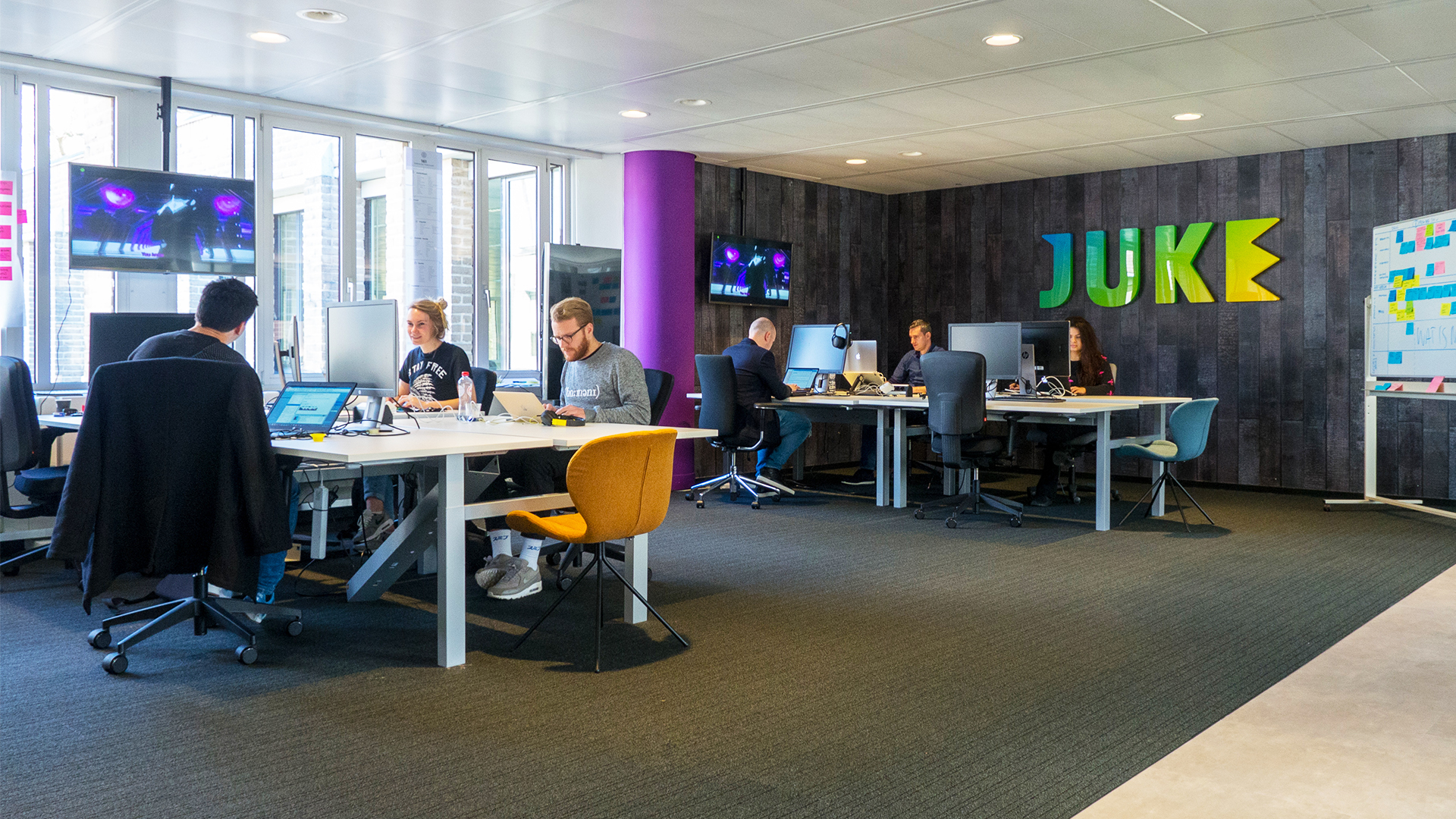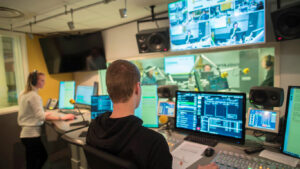As co-founder of Voizzup, a startup that helps radio stations evaluate on-air contents daily by measuring listeners spontaneous reactions on mobile apps, I’ll be working with the VRT, one of the most innovative public radio organisations in Europe in the coming months. Also, hopefully very soon, we’ll be helping some of the stations of a very active and inspiring commercial radio group.
These two organisations have already learned by themselves that they need to adapt for catching up with the latest technological advances and disruptions in audio industry. They have tweaked their internal structure to embed startup-like teams, set up innovation labs and add roles new to Radio such as solution architects, scrum masters, data automation product managers and voice user-experience designers.
Last week during a workshop with one of these organisations we talked about agile radio. In this scenario of constant change, gigantic organisations face the challenge of being capable to adapt fast. They need to turn from heavy, slow elephants into fast and agile mice. My presentation was based on the premise of two basic requirements for agility: using an iterative approach to creation and being user-centric at all phases. Let me explain:
Iteration
By working in short cycles, we invest less time and efforts, we risk less. If what we are working on fails, we have learned fast without jeopardising much. If it works, we can progress and improve.
Users in the center
Users, listeners in our case, are changing behaviours faster than ever. What worked for them yesterday, might not work today. We need to ask ourselves continuously whether we are delivering our users something they care for. Many of those positions and roles mentioned above – usual in software companies, new to Radio – were present among the attendees of last week session. Maybe some of them (not most, I guess) discovered during the session that these two ingredients of agility were not exclusive to their team and discipline. Software developers and engineers use Agile, probably an Agile framework called Scrum. They release as much bug-free code as possible in each bi-weekly or monthly cycle, or sprint. Product managers use Lean. They prioritise efficiently, pointing not at what can be built, but what should be built. Through tests and experiments, they find as quickly as possible the minimum product that delivers value to the customer, they build MVP’s (Minimum Viable Product). Designers use Design Thinking. They conduct research, exploration activities and design exercises for testing in a speedy way their hypotheses about the fit between the problem of the user and the solution.
Many of those positions and roles mentioned above – usual in software companies, new to Radio – were present among the attendees of last week session. Maybe some of them (not most, I guess) discovered during the session that these two ingredients of agility were not exclusive to their team and discipline. Software developers and engineers use Agile, probably an Agile framework called Scrum. They release as much bug-free code as possible in each bi-weekly or monthly cycle, or sprint. Product managers use Lean. They prioritise efficiently, pointing not at what can be built, but what should be built. Through tests and experiments, they find as quickly as possible the minimum product that delivers value to the customer, they build MVP’s (Minimum Viable Product). Designers use Design Thinking. They conduct research, exploration activities and design exercises for testing in a speedy way their hypotheses about the fit between the problem of the user and the solution.
Agile, Lean and Design Thinking, three disciplines for helping teams become agile. Well, not exactly. Agility is about responsiveness, flexibility, adaptation. Like Jeff Gothelf explains in his book “Lean Vs. Agile Vs. Design Thinking: What you really need to know to build high-performing digital product teams”, these methodologies or frameworks have something in common, they all enable continuous improvement (which ultimately motivates organisations to implement them). But they have different approaches and goals: Agile improves velocity. Lean pursues efficiency. Design Thinking verifies problem-solution fit. Like Gothelf says in his book and multiple articles, actual agility is only reachable for those organisations that use and combine the core activities for continuous improvement which are common to all these three disciplines in order to remain focused and aligned.
Where are the radio guys, the professionals of content? Don’t on-air hosts, show producers, news editors, music programmers, audience research managers, programme directors, need to be part of this agility? Members from both organisations I referred to above, have expressed the same concern: “radio guys” (traditional radio teams, closer to content) don’t seem to be interested in seeking agility. Don’t they need to become more responsive to everyday-faster-changing listening behaviours?
I believe they do. I believe WE do. There’s nothing inherent to our profession, vocation or expertise that protects us from the uncertainty of change. We also need to continuously challenge our assumptions and validate that what we are producing and broadcasting, podcasting or streaming has value for our audience. We need to confirm everyday that listeners still care for the content we make.
Lean, Agile or Design Thinking sound alien to us. Why shouldn’t we pursue continuous improvement though? Like Gothelf, I believe the entire (radio) organisation, as one cross-functional team, needs to combine activities for continuous improvement. On-air, programming, editorial, sound production, audience research teams are not exempt. In my opinion, they also need to embrace creation in short cycles and listener feedback at all stages in order to allow continuous improvement. Even if that requires that they come up with their own framework and terminology.
It can be done. Voizzup, together with the editors of De Ochtendspits, the morning show of BNR Nieuwsradio (our client in Amsterdam, recently awarded as the most innovative company in The Netherlands) has developed a methodology for continuous improvement of on-air contents. Data collected from listeners’ reactions during their listening on mobile apps are processed and correlated with on-air contents, minute by minute. Those insights are delivered to the show team daily, for continuous content evaluation. Over time, the editors find patterns. Those patterns are not treated as conclusions but as hypothesis that are tested through experiments. At BNR, editors who iterate through experiments and developers who code in sprints shape teams and work on projects together.
Whether you are an engineer, a developer or a designer working in radio, please do your organisation a favour and share this article with your colleagues working in content. Also recommending them some readings from here could be useful. Most importantly, invite them to participate in your cross-functional team activities, share your knowledge and advocate transparency within your organisation.
If you are a programme director, morning show director, host or producer and you are interested in continuous improvement techniques, you can start today. For initiating you don’t need more tools than paper, pencils and post-its. In this article you’ll find a set of explorative exercises, similar to some Design Thinking activities, that constitute the base of my proposal for self-evaluation and continuous on-air (or off-air) talent development. Give it a try and let me know if you need help. Have fun!
______________________________________
My name is Tommy Ferraz. I’m one of the founders of Voizzup and a former radio programme director. Please, contact me if you would like me to help your team adopt a process for continuous improvement: tommy@voizzup.com




